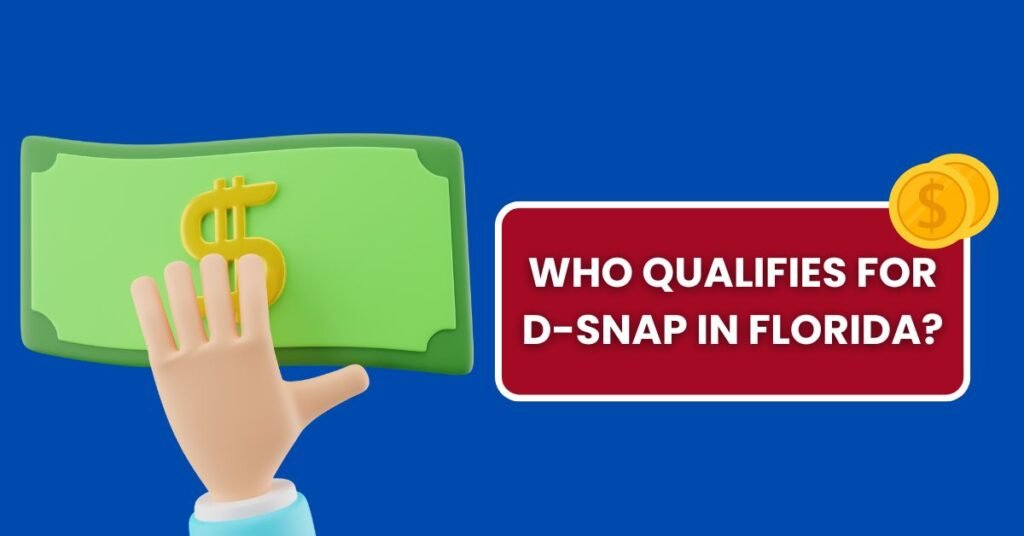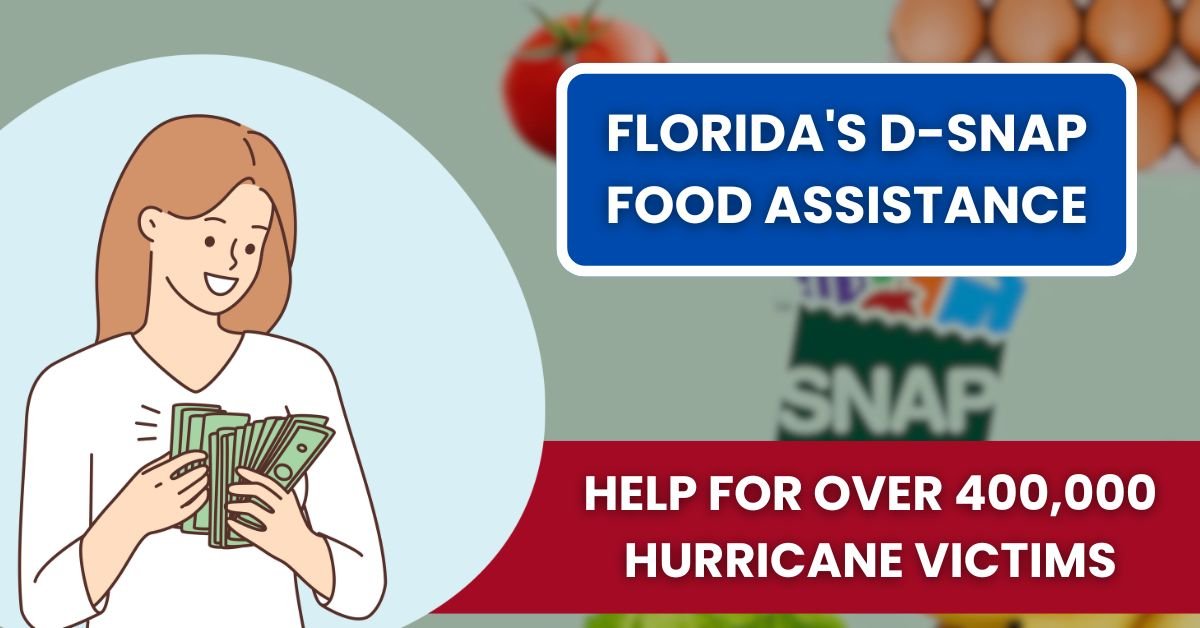More than 400,000 Florida residents affected by the recent hurricanes, Helene and Milton, are now eligible to receive food assistance through Disaster Supplemental Nutrition Assistance Program D-SNAP. This assistance to agriculture impacted families in 24 counties in the state totals approximately 407,733 families, all of whom have sustained severe losses as a result of these natural disasters, according to this USDA-announced program.
Florida was hit with two hurricanes within 12 days and wreaked havoc on swaths of the state in late September and early October. D-SNAP arose because of the extensive damage and disruption to daily life, and because of that, it is designed to support those who urgently need food assistance.
What is D-SNAP?
The D-SNAP is an extension of the regular SNAP program, also known as the food stamps program. SNAP is food assistance for low-income households under normal circumstances. But D-SNAP allows people who don’t usually get SNAP to be eligible if they are affected by the disaster.
Again, just as a reminder, folks who already receive regular SNAP benefits are not eligible for D-SNAP. The program is specifically geared to help those that can’t get and can’t properly use the usual programs for food assistance and who have experienced a disaster, by it being an emergency.
Also Read: Great News: $1,000 One-Time Payment for Residents Coming Soon!
Who qualifies for D-SNAP in Florida?

Residents of 24 counties in Florida can apply through the D-SNAP program if their income levels qualify. For instance, a household of four must earn less than $3,529 a month to receive D-SNAP.
Phase 1: Northern Florida counties
Beginning October 28 and ending October 31, residents of Columbia, Dixie, Franklin, Gilchrist, Hamilton, Jefferson, Lafayette, Levy, Madison, Suwannee, Taylor and Wakulla counties can begin the application process by phone. Applications can be submitted in person in the following counties from November 1 through December 9, 3 days after that.
Phase 2: West coast counties
Phone applications will be available in Charlotte, Hernando, Manatee, Pasco, Pinellas and Sarasota counties to residents of those counties beginning November 4 and between November 6 and November 8. Also, designated locations in each county will accept in-person applicants from November 9 through December 3.
Phase 3: Central and eastern Florida counties
Finally, residents of Citrus, Hardee, Highlands, Hillsborough, Lee, and Volusia counties are able to apply by phone between November 12 through November 15. Starting November 16, that’ll give people affected a window of time in which to apply in person—until December 15.
Also Read: Social Security Benefits for Non-Retirees: How to Claim Your Benefits
How to apply for D-SNAP assistance
During these dates of each phase, residents wanting to apply by phone will be required to call the numbers specific to the state of Florida for that phase. People can go to counties for centers set up to apply in person if they prefer. Applicants must prove their identity and residency and show the damage they suffered due to the hurricanes in order to qualify.
Florida officials had also advised that applicants take the time to gather all necessary forms before making their submissions. As demand is likely to be high in the early phases, it is advisable that before arriving, people are prepared to facilitate no unnecessary delay.
During or after a disaster, it can be overwhelming for those affected to figure out which resources are available to them. These types of programs help keep families and individuals on their feet to help rebuild their lives after such a disruption. The USDA and the state of Florida hope to help ease some of the burdens of hurricanes Helene and Milton by making food assistance more available after the storms.
The destruction of the hurricanes is enough for many families to lose not just their property but also break continuity of normal income and make it difficult to cover the basic needs of life, such as food. D-SNAP addresses these immediate needs to help residents get through the recovery period while not having to worry about food insecurity. The phased rollout allows counties to be served in a managed and efficient manner and still accommodate large numbers of people that may need help.
FAQs
Q. What is the D-SNAP program?
A. The D-SNAP (disaster supplemental nutrition assistance program) is an extension of regular SNAP (supplemental nutrition assistance program) that offers food assistance to people and families that are not generally eligible for the SNAP program but who have been adversely affected by disasters, such as hurricanes. It is expected to help those who urgently need food assistance following a disaster.
Q. Who is eligible to apply for D-SNAP in Florida?
A. D-SNAP is available to residents of 24 counties in Florida who have lost homes or other critical property and income as a result of severe hurricanes, if they meet specific income levels. For instance, in order to qualify for assistance, a household of four must make less than $3,529 per month.
Q. How can I apply for D-SNAP assistance in Florida?
A. In each phase, you can apply for D-SNAP assistance in person or by phone, and you can apply in person at designated dates and locations in your county or in person by phone at designated dates and times during the phase when available to you.
Q. What documentation do I need to provide when applying for D-SNAP?
A. The results will include proof of identity and residency as well as proof of the damage they suffered due to the hurricanes. In advance of your application, make sure that you have all necessary forms gathered.
Q. How does D-SNAP help families affected by hurricanes?
A. D-SNAP helps families meet their most urgent food needs in the aftermath of a disaster before they have enough time to return to their normal sources of food assistance. This support allows residents to concentrate on rebuilding their lives without having to also confront the task of providing those basic food needs.

